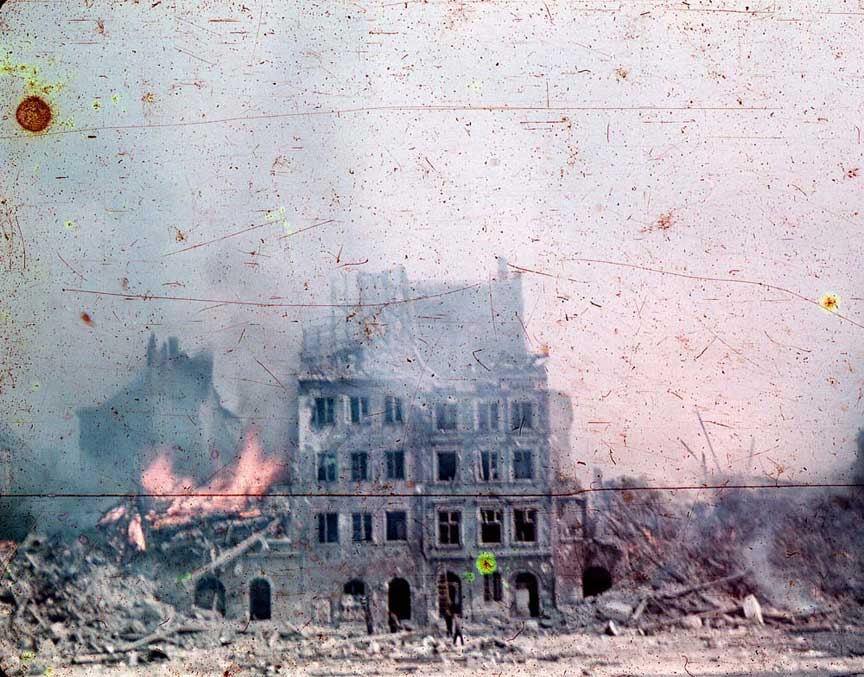September 1, 1944 Polish Revolt in Warsaw Begins

Old Town in Warsaw in flames during the Warsaw Uprising.
As the Soviets neared Warsaw the Polish underground began a revolt against the Germans. The Poles were expecting to receive Soviet aid which did not come. The rebels initially achieved some of their objectives, but the German fought back. Using their advantages in armor, artillery and aircraft the German defeated the rebels, killing 16,000 Polish fighters and between 150,000-200,000 civilians.As Soviet forces drew closer to Warsaw, the Polish underground organization made a daring decision to launch a revolt and seize control of the city. This action was driven by a confluence of objectives: to contribute to the defeat of the Nazi regime and bolster the war effort, as well as to assert Polish sovereignty in the face of Soviet encroachment. Furthermore, there was a palpable apprehension that the German forces would round up every able-bodied male in the city upon their withdrawal.
The Polish revolt commenced on August 1, 1944, under the auspices of Operation Tempest. Initially, the Polish underground achieved remarkable success, securing control of a substantial portion of central Warsaw. The revolt was launched with the understanding that once the Poles had secured the pivotal areas of the city, the Soviet forces, who had advanced to the eastern bank of the Vistula River opposite Warsaw, would provide their support. However, the Soviets, positioned directly opposite the city, opted to allow the Polish underground to fight alone.
In response, the German forces retaliated with vigor, receiving reinforcements from outside the city. They also systematically carried out massacres of Poles in the areas they controlled, systematically eliminating individuals from apartment to apartment. Despite the German onslaught, the Polish underground managed to liberate the Gesiowka Concentration Camp within the city, freeing the 350 Jews therein.
Despite the German introduction of tanks into the city, the Poles managed to achieve a stalemate with their adversaries. Nevertheless, the German forces resorted to employing both artillery to bombard the Polish positions and their air force to conduct air strikes. The Soviet forces, situated in close proximity and possessing overwhelming air superiority, refrained from intervening or deploying their substantial army across the Vistula to confront the Germans.
Despite the pleas of the British and Americans for Soviet intervention, Joseph Stalin disregarded their requests. Consequently, the British initiated the transportation of planes to aid the rebels. The United States dispatched a single flight of B-17 bombers, and towards the conclusion of the rebellion, the Soviets even provided some supplies. Ultimately, the German forces, bolstered by their superior air and artillery support, emerged victorious against the rebels. Tragically, approximately 16,000 members of the Polish resistance perished, along with between 150,000 and 200,000 Polish civilians. A staggering 70% of the city was reduced to rubble. Stalin’s decision to order his troops to cease hostilities was motivated by his desire to eliminate any potential opposition to the Soviet post-war dominance over Poland.
 >
>